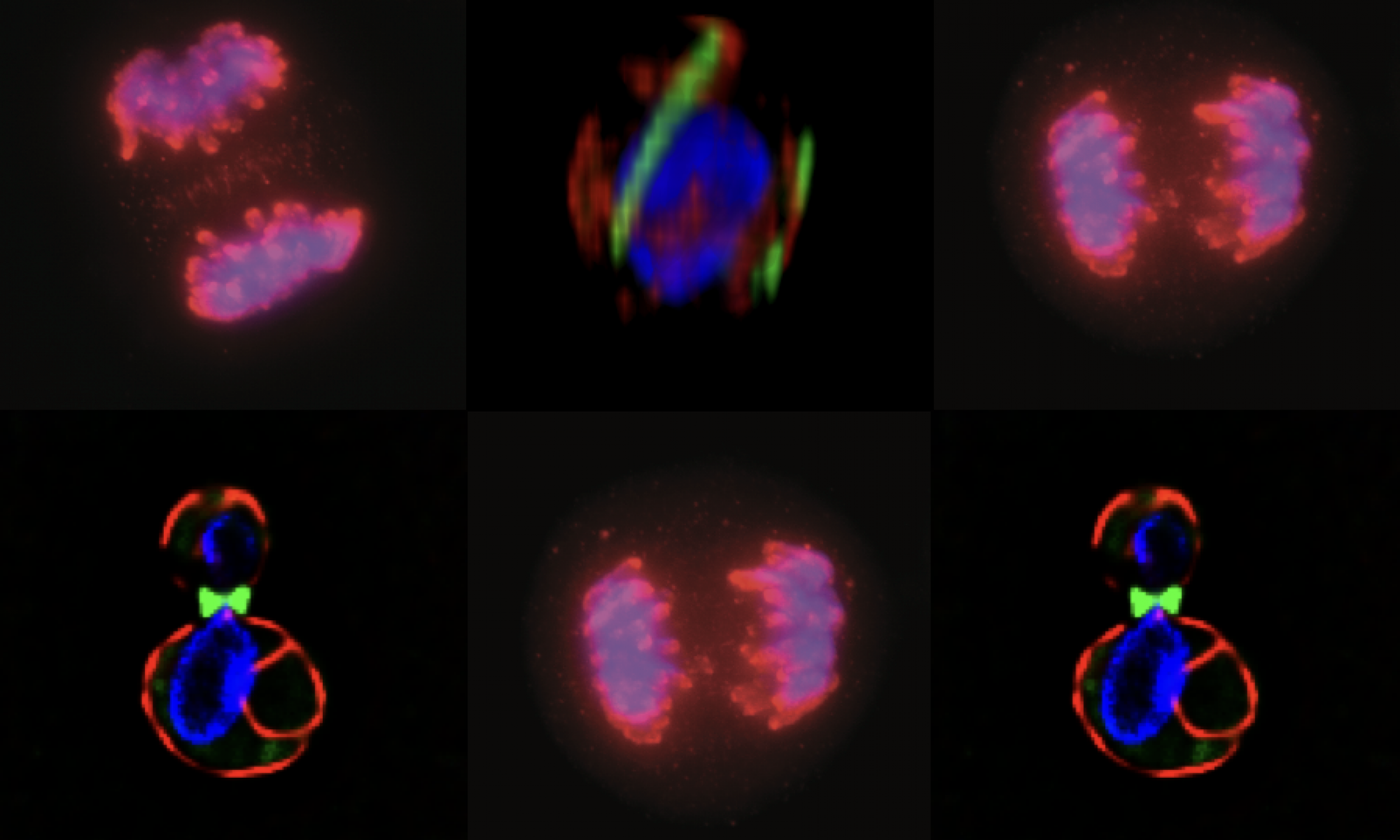Here is extended lab family listed in reverse chronological order with the most recently departed first. Forgive me if I have not included you, but it’s probably because I have no photo and/or lost track of you. I would love to hear from anyone with old photos or updates so get in touch.
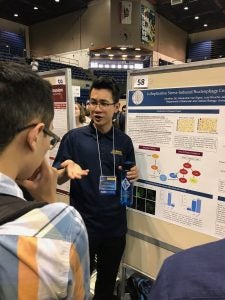
Jonathan Do joins an impressive group of former Junior Specialists and students in my lab that have gone on to their next steps of greatness. Jonathan was many things in my lab: a student, a baker of delic a teacher, a colleague and an impassioned inquirer of how all things biological work. His work on autophagy during anaphase and in response to replication stress has been a hugely fascinating puzzle to solve. We know a lot now and are ready to write it up the first chapter, though that will be slower (good news and bad news) now that Jonathan joined an MD/PhD program at the University of Arizona this summer (2022). Jonathan was also an Environmental Toxicology major and McNair’s Scholar.
Lauren Ford was NPB major became interested in Peto’s paradox, which predicts that large, long-lived mammals, such as elephants, must have evolved unique mechanisms to reduce the risk of cancer mutations. She ended up helping us measure genomic damage in response to replication stress in the presence or absence of autophagy pathways. Though much of her work was “remote” due to the pandemic, she made a big impact on the lab. Lauren has gone onto work at UCSF as a Clinical Research Coordinator while she applies to medical school.
Emily Huang is a current Biosciences major and has become interested in how cell stress pathways involving septins and autophagy might be connected to neurodegenerative disease initiation and progression.
Joseph Gonzales initiated our explorations into ESCRTIII complexes in budding yeast, their relationship to replication stress and the Aurora B kinase. This is still an area of interest for us and needs an eager student to jump back in.
Neha Valluri started in the lab as we ran into the pandemic so her project is in “remote mode”. Welcome to 2020. Neha became interested in the idea that nutritional factors might influence genome stability in cancer progression or in in cancer cells exposed to chemotherapies. Reduction in nutrients activate autophagy pathways and this might impact the genome surveillance pathways that we are interested in.
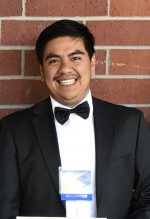
Luis Perucho-Jamies is the lead author on our septin and autophagy work (manuscript written!). His stellar efforts provided the foundation for our jumping into the world of autophagy regulation. He also worked with Alex Van Elgort to initiate the project on replication stress-induced nucleophagy (ReSIN). He’s now working at UC Davis in public health and playing poker – hold on to your wallets!
Angelica McDaniel was an NPB major and joined the lab to study how cell stress affects septin localization. Our work on nutrient starvation showed that septins re-localize the the cell cortex late in starvation. Angelica nicely demonstrated that other forms of cell stress, including proteotoxic stress, ER stress and EtOH stress all induce similar changes in septin localization. Even though she’s graduated, Angelica remains a part of the current lab family. She joins our group meetings and is working on writing a review of the literature that connects septins, autophagy and neurodegenerative disease. In the meantime, she’s living in San Diego and taking classes online waiting for the chaos of COVID19 to subside.
Mackenzie Noon was a GGN major at UCD and an excellent researcher in my lab. His project focused on the role of nucleophagy in maintaining genome stability. He pioneered the use of qPCR in our lab to measure the size of the rDNA array. Before deciding to move to UC Berkeley (really??), he obtained some very strong evidence connecting rDNA stability to nucleophagy pathways. Check out the nice post about Mackenzie linked in my post and on the College’s website. Mackenzie left UC Davis in 2019 and is finishing his degree at UC Berkeley. He may have left the lab, but once a Kaplan Lab member – always a Kaplan Lab member.
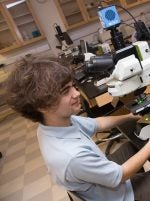
Mackenzie is asking how autophagy pathways contribute to the fitness of cells that experience replication stress.

Alex Van Elgort (Jr Specialist) initiated several projects in my lab, including our most recent work on replication stress-induced autophagy. She’s now a first year graduate student at Stanford University!! Alex recently became a recipient of a prestigious National Science Foundation Graduate Research Fellowship. Congrats Alex!!
Tanahashi Ryoya visited the lab from The Nara Institute of Technology in Japan. In his brief stay, he became an expert in deconvolution processing of fluorescence microscopy images. Check out some of his beautiful work at the link above. Ryoya is actually visiting UC Davis this year (2022) and is working with Drs. Fox and Boundy-Mills studying proline utilization in the wild yeast collection.
Arianna Cisneros was an undergraduate cell biology major that came to my lab based on her curiosity and passion in MCB140L. She took on a quantitative project to use high resolution imaging to quantify the behavior of autophagy membranes in wild type and septin mutants. This was a project of attrition with many approaches being discarded along the way. Ariana used a lot of manual measurements to develop a strong set of preliminary analysis that confirm our hypothesis and has spawned a new set of efforts to develop quantitative tools for analyzing how sub-cellular structures are “constrained” from freely moving inside cells. Since graduating, Arianna has been working at Nanomix, a biotech company in Emeryville.
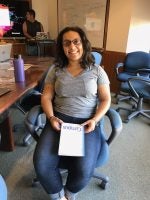
Mark Williams

Mark was part of our nascent mammalian cell effort to explore how autophagy pathways respond to replication stress and micronuclei formation. His work provided the preliminary data for us to explore this question in more earnest. Thanks Mark and good wishes for success moving forward.
Jonathan Mendes (MCB140Ler and UG Summer Student): Jonathan was a visiting student from Brazil and took my 2016 MCB140L course. In studying the changes in septin localization and the literature implicating septins in targeting intracellular pathogens for autophagy, Jonathan became convinced that septins in yeast were associating with membranes involved in autophagy of the mitochondria (mitophagy). I challenged him to prove it. He came to the lab over the summer and we worked together to show that septins did dramatically relocalize during nutrient starvation (a trigger of many types of autophagy). This work led to a new focus for my lab, linking the role of septins in autophagy to membrane dynamics in anaphase. Jonathan had to return to Brazil, where he is (I think) focused on astrobiology. A great example of how intuitive leaps and being brave in science can pay off.
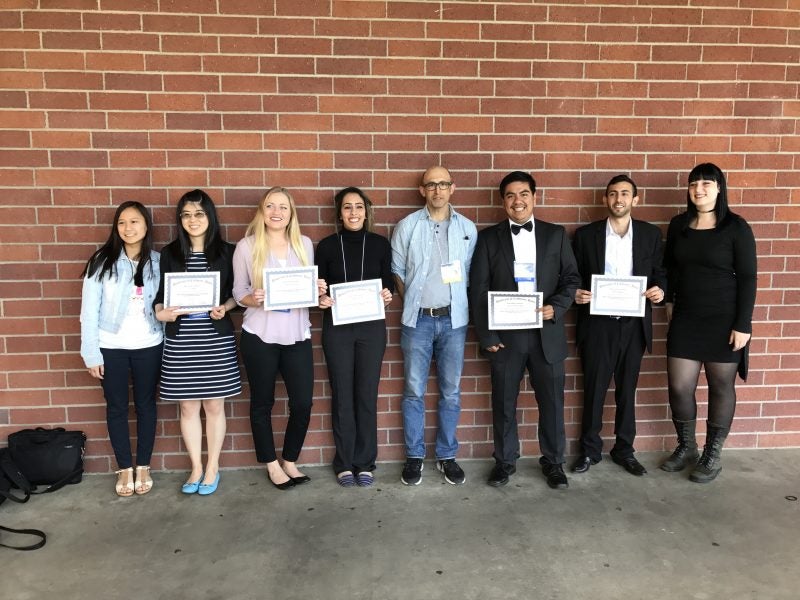
Aileen Chhen (UG Thesis Student): Aileen did her honors thesis project investigating the literature associated with Hsp90 inhibitors in clinical trials and analyzed how closely clinical trials correlated with pre-clinical literature. Her results were surprising in that very few clinical trials used assessments or populations of patients that correlated with positive outcome in pre-clinical experiments.
Lo Tuan (UG Thesis Student): Lo examined how mutants in autophagy survived replication stress. Her findings form the basis for many of the questions we are currently investigating.
Lauren Hargis (UG Thesis Student): Lauren worked on a number of projects related to anaphase spindle regulation after replication stress. She and Alex expanded our some of the observations made by Claire Jaramishian and Nichole Lewis on the biochemical changes in microtubule regulators after replication stress. Lauren is now at employed at Mirati Therapeutics and plans to apply to graduate school.
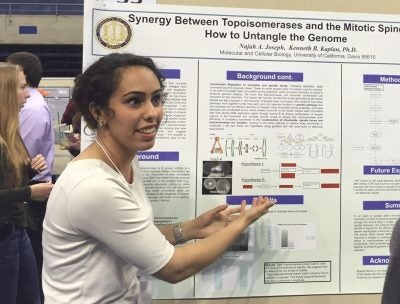
Najah Joseph (UG Thesis Student): Najah examined the biochemical changes in microtubule regulator proteins in topoisomerase mutants. She’s currently pursuing her medical degree!
Marvin Begian (UG Thesis Student): Marv as he’s known to the lab worked on the role of condensins in responding to replication stress and in helping sister chromatid resolution in anaphase. Marv is currently in LA, and we’re sure he’ll be running a large corporation soon.
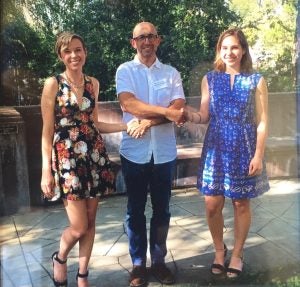
Claire Jaramishian (UG Thesis Student) Claire and Nichole (see more here) worked together to push forward our biochemical characterization of spindle-associated proteins after replication stress. Their dogged efforts and many glycerol gradients later resulted in some of our most interesting insights into the mechanisms that regulate mitotic spindle behavior. Claire is currently attending Touro University for medical school.
Nichole Lewis (UG Thesis Student): Nichole formed part of the dynamic duo who pushed forward biochemical studies of spindle proteins in the lab. See more about Nichole’s work here. She’s now in graduate school at UC Davis in the BMCDB program doing her PhD thesis in the Knoepfler Lab on stem cells.
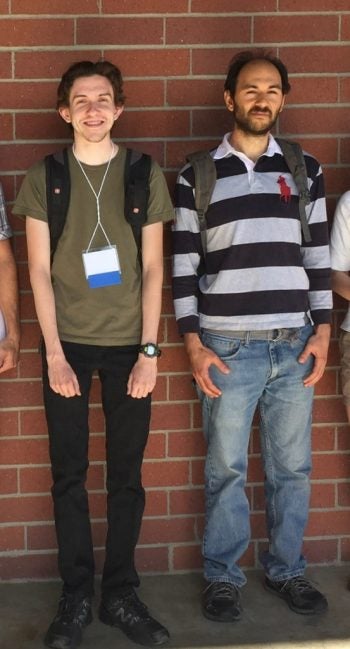
Ryan Kyger (UG Thesis Student): Ryan’s thesis work focused on the genetic analysis of spindle regulation after replication stress. His work followed up on our observations that both microtubule regulators and kinesin 5 motors were being altered. Ryan showed that mutations in kinesin 5 phosphorylation sites phenocopied Aurora B mutants, arguing that kinesin 5 is regulated by Aurora B. Ryan went on to earn his Masters degree at San Francisco State University and is now pursuing his PhD in Cell and Molecular Biology at the University of Nevada, Reno.
Artem Movsesyan (UG Thesis Student and Jr Specialist): Artem spurred a new line of work in my lab looking at abscission in the presence of unresolved sister chromatids. His work led us to conclude that unresolved sisters do not directly block abscission. Artem also showed that replication stress causes an Aurora B dependent modification of histones, consistent with a change in the packing of chromatin after replication stress. Artem went on earn his Masters degree at San Diego State University and is now a staff scientist in the Posakony lab at UCSD.
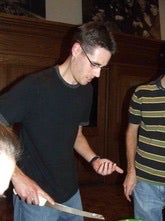
Alex Davies, Ph.D, DVM (graduate student BMB, post-doctoral fellow): Alex and the Kaplan Lab go back a long way. I first met Alex as a hard working UG with “big ideas”. He joined the BMB graduate group and then the Kaplan Lab, where he studied many things including the quality control pathways that ensure the proper assembly of the kinetochore in human cells. After graduating with his Ph.D. Alex went on to UC Davis Vet school, and returned for a brief post-doctoral stint the Kaplan Lab where he worked on the Hsf1-adapative pathway in cancer cells. Alex continued his post-doctoral work in Mina Bissel’s lab in Berkeley and now in John Albeck’s lab at UC Davis. Alex took a position as an Assistant Professor at The Ohio State University where he’s started his own lab. Congrats Alex!!
Katie Kortright (UG Thesis Student): Katie worked with Alex Davies to screen APCMin/+ intestines for novel markers associated with pre-cancer tissues. Her work identified several interesting changes in normal intestinal crypt cells harboring a single mutant allele of APC, including the up-regulation of Hsp90. She was a co-author on the Oncotarget paper with Alex Davies. Katie went on to do her Ph.D. at Yale in Microbiology.
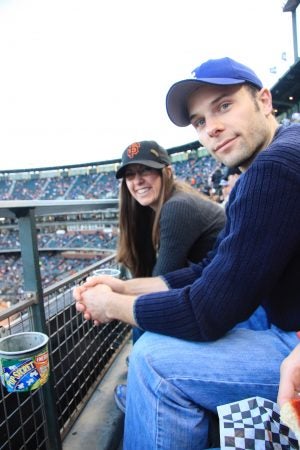
Brandon Zipp (graduate student, BMB): Brandon worked on the initial characterization of anaphase in the lab. His work initiated from the question, “why are there pathways that appear to regulate anaphase spindle dynamics in anaphase?” His thesis work showed that replication stress or mutations that prevent sister chromatid resolution altered spindle dynamics through changes in Aurora B regulation. Brandon graduated, joined a biotech company and rapidly rose to be Director of Research and Development at Vitality Biopharma.
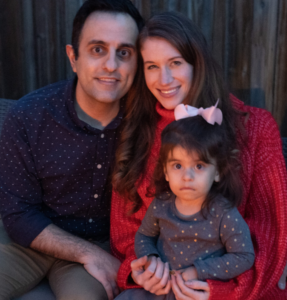
Justin Badal (UG student): Justin joined the lab and worked on the Sgt1 homologue from rice. After graduating Justin went to medical school at Baylor College of Medicine. He is currently doing an residency at UC Davis in urology. There are no photos (that I can find) from Justin’s time in the lab, but I’ve posted a current one of Justin with his family.
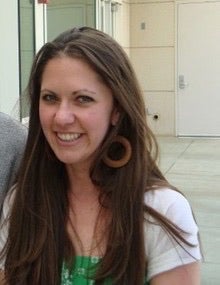
Natalie Petek (UG Thesis Student): Natalie worked on understanding how chromosome passenger proteins are targeted to kinetochores and the anaphase spindle. She showed that Bir1 (the homologue of Survivin) associated with kinetochores via Sli15/Incenp, a result that suggest the importance of microtubules for linking CPCs to kinetochores. After generating dozens of Sli15 allele that we still haven’t analyzed completely, Natalie graduated and entered the Ph.D. program at UCSF and did her thesis in the lab of Dyche Mullins (the second Kaplan Lab member to do their Ph.D. in that lab).
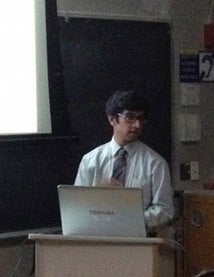
Hamza Ahsan (UG Thesis Student): Hamza worked with Brandon on characterizing the biochemical modifications of spindle associated proteins after replication stress. After graduating, Hamza took a position with Bayer Pharmaceuticals.
Stacia Sherry (UG Thesis Student): Stacia’s project looked at how different components of the chromosome passenger complex (CPC) differentially regulated spindle associated proteins. This work provided evidence that different CPCs might have distinct roles during cell division. Stacia went on to nursing school.
Danielle Mandikian (UG Thesis Student): Danielle was part of our kinetochore assembly group. Her project focused on how Hsp90 and the co-chaperone Sgt1 modulated the transitions in between kinetochore complexes at centromeres and the anaphase spindle. Danielle went on to earn her Ph.D. as. UC Davis graduate student in the Trimmer lab and then on to Genentech where she is an associate scientist.
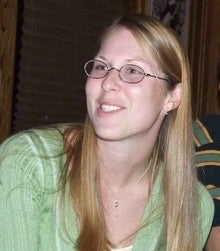
Sarah Sundstrom (Jr Specialist): Sarah worked on the kinetochore assembly project, specifically analyzing how Sgt1, an Hsp90 co-chaperone, is modified during the cell cycle. It was her work that suggested a connection between replication stress, cell chaperones and thus to kinetochore and CPC. Sarah went on to earn her Ph.D. at Boston University. She is now a teaching professor at the University of Massachussetts, Lowell.

Dan Rozelle (Graduate Student, CDB): Dan’s thesis project focused on regulation of spindle dynamics in anaphase. His work showed that defects in chromosome passenger complexes could slow spindle elongation by converting kinesin 5 motors to a “brake”. This work grew into our analysis of how replication events could work through CPCs to regulate anaphase. Dan connected this regulation to a feedback between spindle elongation rates and cell cycle regulators of anaphase. His work also connected the rate of spindle elongation with controlling the timing of septin dynamics. The master of filming yeast, Dan was also part of the “cycling” group and lunch time rides and epic trips down the California coast. Dan also met his future wife, Sarah Sundstrom, in the lab (very efficient!). Dan went on to do post-doctoral work in the Connor Lab at Boston University.
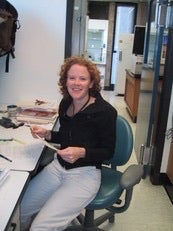
Christy Caldwell (Graduate Student, BMB): Christy was part of the cancer subgroup in the lab that focused on the defects in cancer cells that contribute to chromosome instability. Christy worked with Becky Green to characterize the mitotic defects induced by expression of a single cancer-mutation in adenomatous polyposis coli, APC. Her work expanded into our first foray into mouse models. Christy beautifully found evidence for mitotic defects in APCMin/+ cells in intestinal crypts. These findings provided strong evidence that mitotic defects preceded cancer onset and thus could be a factor in contributing to the disease.

Scott Thomas (Graduate Student, BMB): Scott came to the BMB program and then the lab from SFSU. His thesis focused on analysis of chromosome passengers and their interaction with the inner kinetochore complex. His work bridged our kinetochore assembly project with biochemical analysis of their role as chromosome passengers. Scott mapped the domains of the inner kinetochore complex protein Ndc10 and of chromosome passengers to understand how they assembled together on the anaphase spindle. Scott used is mapping data to generate novel alleles of chromosome passengers that showed their role in regulating septin dynamics in anaphase. Scott was also part of the cycling group, most famous for his unplanned diversion on the coast trip. Scott went on to Pam Munster’s lab at UCSF. Scott is now staff scientist in the Munster lab.
Michael Catlett (post-doctoral fellow): Mike earned his Ph.D. with Susan Forsburg and began working on Sgt1, a protein we knew to be involved in kinetochore assembly. Mike’s beautiful biochemical work showed that Sgt1 functioned as a co-chaperone with Hsp90. He expanded these observations to think more broadly about chaperones, protein plasticity in both normal and cancer cells.
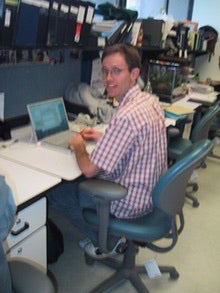
Scott Hansen (UG Thesis Student and Jr Specialist): Scott was first and UG in the lab and then stayed on as a jr specialist. His projects focused on live cell microscopy and imaging anaphase spindles and septins. His work contributed to our understanding of spindle dynamics and the idea of a kinesin 5 “brake”. Scott went on to do his graduate work in Dyche Mullin’s lab at UCSF and a post-doctoral fellowship with Jay Groves and is now running his own group at the University of Oregon!! Well done Scott.
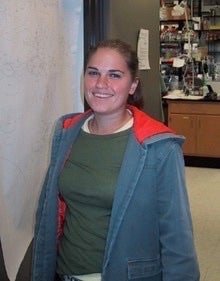
Amethyst Gillis (UG Thesis Student and Jr Specialist): Amethyst picked up on kinetochore assembly using some of the tools we had developed to monitor in vivo assembly. She focused on the observation that inhibiting assembly of the inner kinetochore complex, CBF3, altered cell shape. She worked with the Scotts in the lab to show that the change in cell shape was due to defects in septin dynamics. It was this observation that led us to begin to consider the dual role of kinetochore complexes in attachment of chromosomes to the spindle and in their transition to the anaphase spindle. Amethyst pursued her Ph.D. at UCSF with Raul Andino. Her interests shifted to infectious diseases, and she did additional work the Rosenthal lab on malaria. She is now in Cameroon heading their infectious disease lab and part of an effort with Metabiota to monitor emerging infectious diseases.
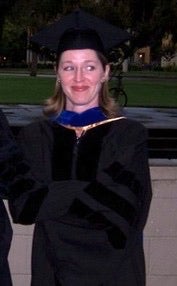
Rebecca Otley-Green (Graduate Student, MMG): Becky fortuitously happened into my lab after a weekend brunch brought us together. Becky’s thesis project was to test the hypothesis that mutations in adenomatous polyposis coli affected mitotic fidelity. She showed that mutations in APC found in familial and sporadic cancers could act as a dominant negative, specifically inhibiting the microtubule regulatory function of wild type APC. This was sufficient to drive mitotic defects. This idea transformed the way we think about chromosome instability in cancers, forcing us to confront the possibly that such errors might precede and thus contribute to cancer onset. Becky went on to do post-doctoral studies with Karen Oegema at the Ludwig Institute in San Diego where she has focused on the control of abscission during cytokinesis.

Annette Lentz: (Graduate Student, CDB): Annette worked in Scott Hawley’s lab before being accepted into the CDB graduate group and joining my lab. Annette was draw to understanding the spindle checkpoint. She was particularly interested in how checkpoint proteins came to associate and dissociate with the kinetochore. Tragically, we lost Annette to an accident when she was on her way for a weekend in Tahoe. She received her masters degree posthumously.
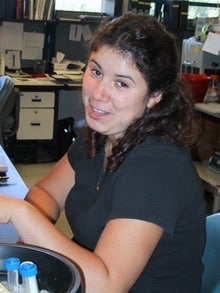
Monica Rodrigo-Brenni (UG Thesis Student and Jr Specialist): Monica excelled at benchwork from the moment she joined the lab. She was talked out of medical school and carried out some beautiful work on the assembly of the CBF3 inner kinetochore complex. It was her insights that led us to consider the balance of assembly and turnover necessary for the fidelity of kinetochore protein complex assembly. Monica was accepted into the graduate program at UCSF, where she worked with my Ph.D. mentor, David Morgan. Her thesis work there was on the other APC (anaphase promoting complex). Monica is now a Principal Lab Research Scientist in Steven West’s lab at the Crick Institute in Cambridge UK.
Linda Lingelbach (post-doctoral fellow): Linda joined my lab to work on kinetochore assembly as mediated by the Sgt1-Skp1 complex. She found that the interaction between these complexes is mediated by the Hsp90 chaperone, thus placing. much of our future work in the realm of understanding Sgt1, Hsp90 and quality control of protein complex assemblies. Linda is now working for the Life Science Group at BioRad.
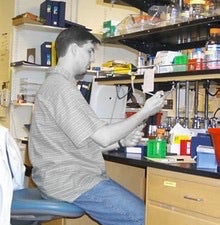
David Bouck (Jr Specialist): David began it all. I hired David right after he graduated UC Davis and when I first arrived at UC Davis to start my lab. David was there for all the unpacking and set up. He was instrumental in setting up recombinant protein production and this allowed us to start documenting the steps in CBF3 assembly. David went on to earn his Ph.D. with Kerry Bloom at UNC, Chapel Hill. His work there ended up overlapping with our own work on chromosome passenger complexes. David is now Senior Scientist at Takeda Pharmaceuticals.
